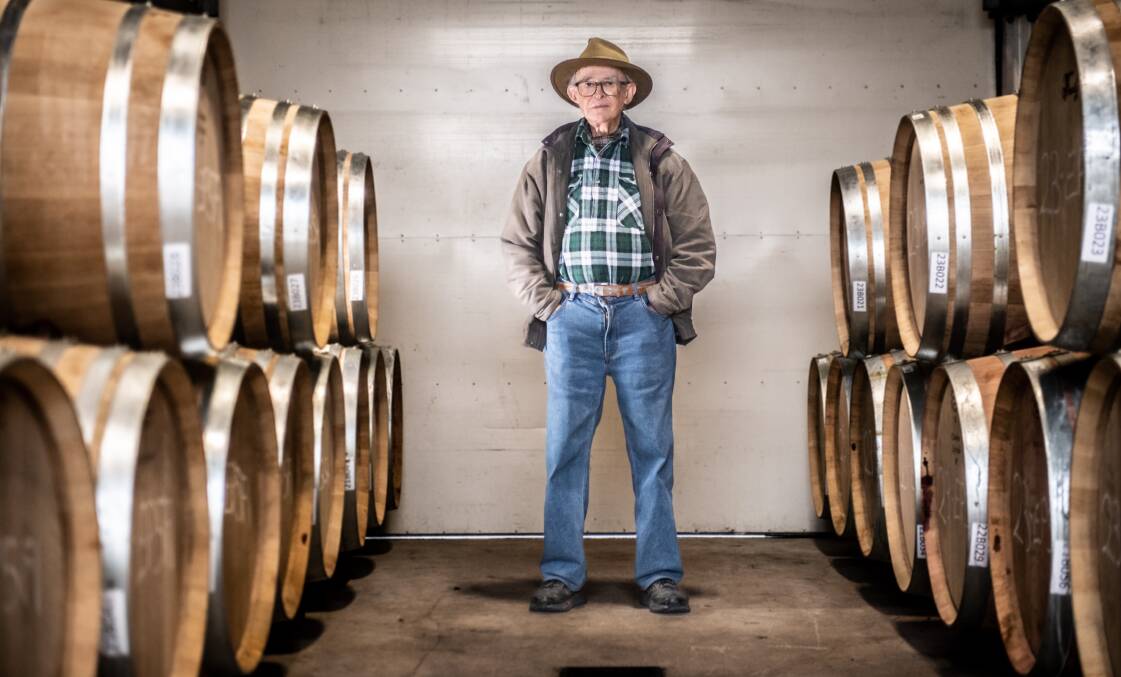
When John Kirk first set eyes on the gentle slopes of what was to become the world-leading vineyard Clonakilla, he just knew it was the right spot.
He'd been looking for some land to plant some vines - the CSIRO scientist had an interest in wine that went beyond the occasional glass of red - and when 18 hectares or so became available out on Crisps Lane near Murrumbateman, he went out to take a look.
"I looked at a lot of blocks, some out on Macs Reef Road, they were nice if you just wanted to live in the country, but as a farmer, they just didn't give me the right feel," he says.

"When I came and looked at this area, I just felt intuitively that it was good land.
"I asked the man who owned it if I could dig a hole, not that I was any expert on vine growing soil, but it looked promising to me so I made him an offer.
"He accepted it and in that very same year, 1971, we planted our first vines."
Fifty-two years later Clonakilla is considered one of the world's leading vineyards. Earlier this year, its 2001 shiraz-viognier was named as one of Decanter magazines top 100 wines in the world.
Kirk remembers the first wine he ever made. By 1976, he had enough grapes to make a blend of riesling and sauvignon blanc - "which isn't really a blend", Kirk says - and he also made a blend of cabernet and shiraz.
He took his wine into work at the CSIRO, where fellow budding winemakers Edgar Riek and Ken Helm were colleagues. Helm ended up buying a bottle off Kirk for $2.
Kirk was appointed Member of the Order of Australia (AM) in the King's Birthday honours list for his significant services to oenology and professional associations.
Alongside his winemaking, Kirk is a world authority on biochemistry and plant science. After studying at Cambridge and Oxford, he was head-hunted by the CSIRO and came out to Australia in 1968.

It was a big decision. He and his wife Julia, who he met in the biochemistry PhD program at Cambridge in the 1950s, where men outnumbered women 10 to one, already had four young sons. They had two more not long after they arrived. They were married for 58 years.
Kirk's interest in wine began in his teens.
"I wasn't drinking it, but working in my parent's hotel in County Clare in Ireland," he says.
"They put me in charge of looking after the bar and stocking the cellar so I had to learn something about it."

Kirk's intuition about the Clonakilla site was backed by plenty of research. He was surprised to find Canberra had very similar climatic conditions to those of the Bordeaux region in France. He had a feeling, but he also had the science.
Kirk will be 88 next month. with 22 grandchildren and two great-grandsons, the Clonakilla story will continue.
He can still be found in the vineyard on a regular basis.
"Now is the time to prune the vines, and there is a little science to it," he says.
We've made it a whole lot easier for you to have your say. Our new comment platform requires only one log-in to access articles and to join the discussion on The Canberra Times website. Find out how to register so you can enjoy civil, friendly and engaging discussions. See our moderation policy here.







